Abstract
Laboratory studies investigated the influence of dissolved oxygen tension (DOT) on microbial degradation of hexadecane in cultures with sediment-seawater suspensions. With a fermentor system, it was possible to adjust and regulate different oxic conditions (DOTs between 0.4 and 80% of oxygen saturation) as well as anoxia. The effects of DOT reduction on the amount and rate of hexadecane degraded and on the degree of mineralization and on the production of biomass were investigated. When the DOT was reduced from 80% to 5%, no dependence of the investigated parameters on the oxygen concentration was found. The amount of hexadecane degraded was constant, with an average value of 86% of the initially applied amount. The degradation rate was constant even down to 1% DOT, with an average value of 0.15 mg of hexadecane per g of sediment per h (16.2 mg liter-1 h-1). The mean degree of mineralization was 70% of the initially applied hexadecane, and biomass production reached a value of about 1.5 g per g of hexadecane consumed. A significant influence on the degradation process was detected only with DOTs below 1%. The degree of mineralization and the amount of degraded hexadecane decreased, whereas the degradation rate was still unaffected. Under anoxic conditions, no hexadecane degradation occurred within 190 h. The fact that the hexadecane biodegradation rate was constant down to at least 0.04% DOT shows that the actual oxygen concentration is of minor importance as long as the oxygen supply is high enough to guarantee the oxygen-dependent degradation step.
Full text
PDF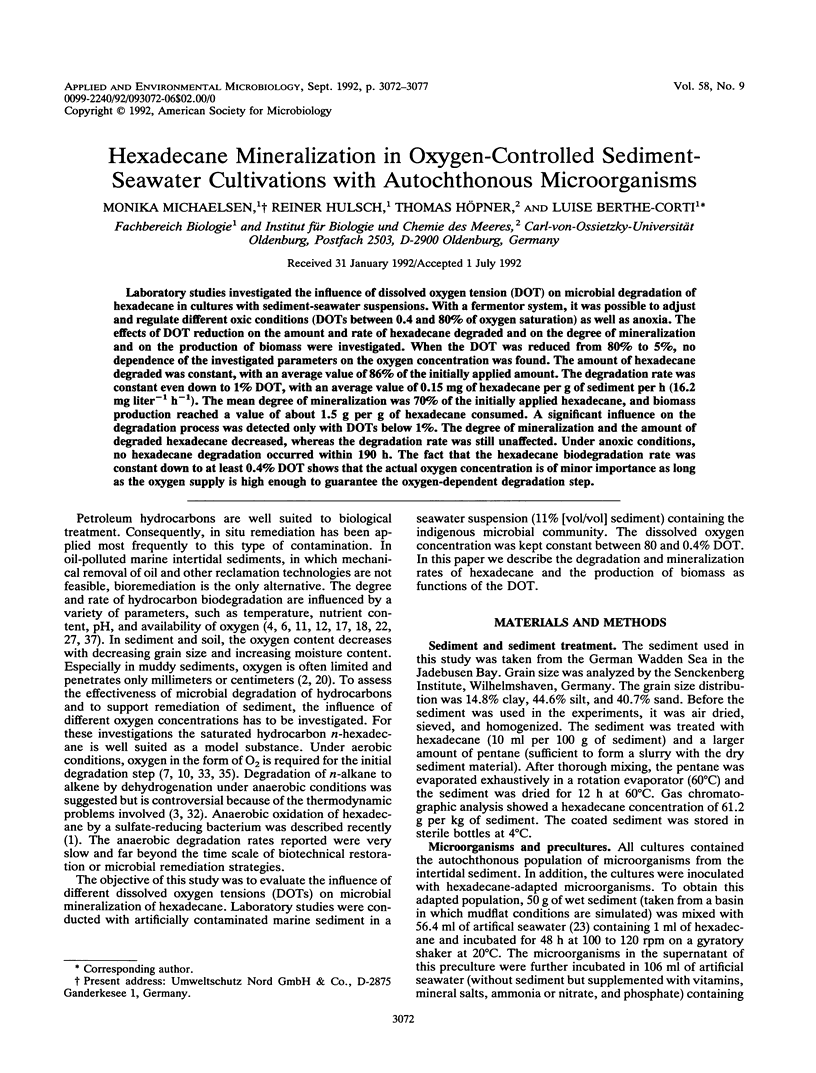
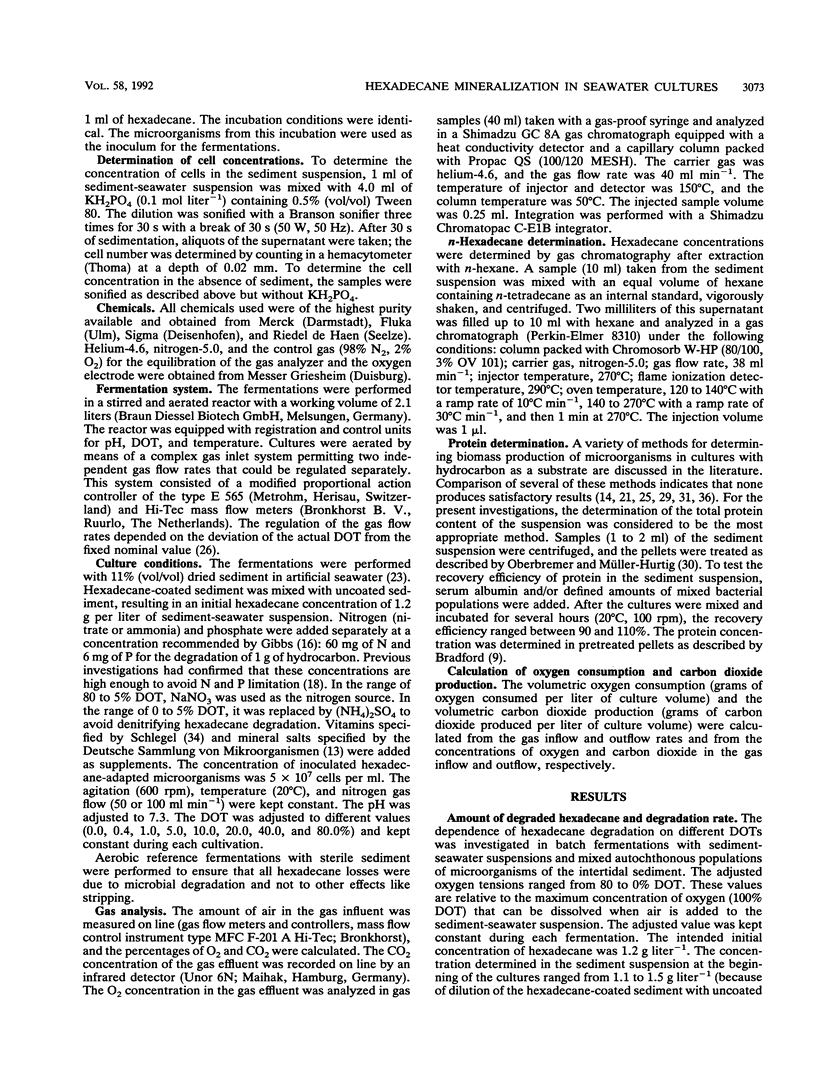
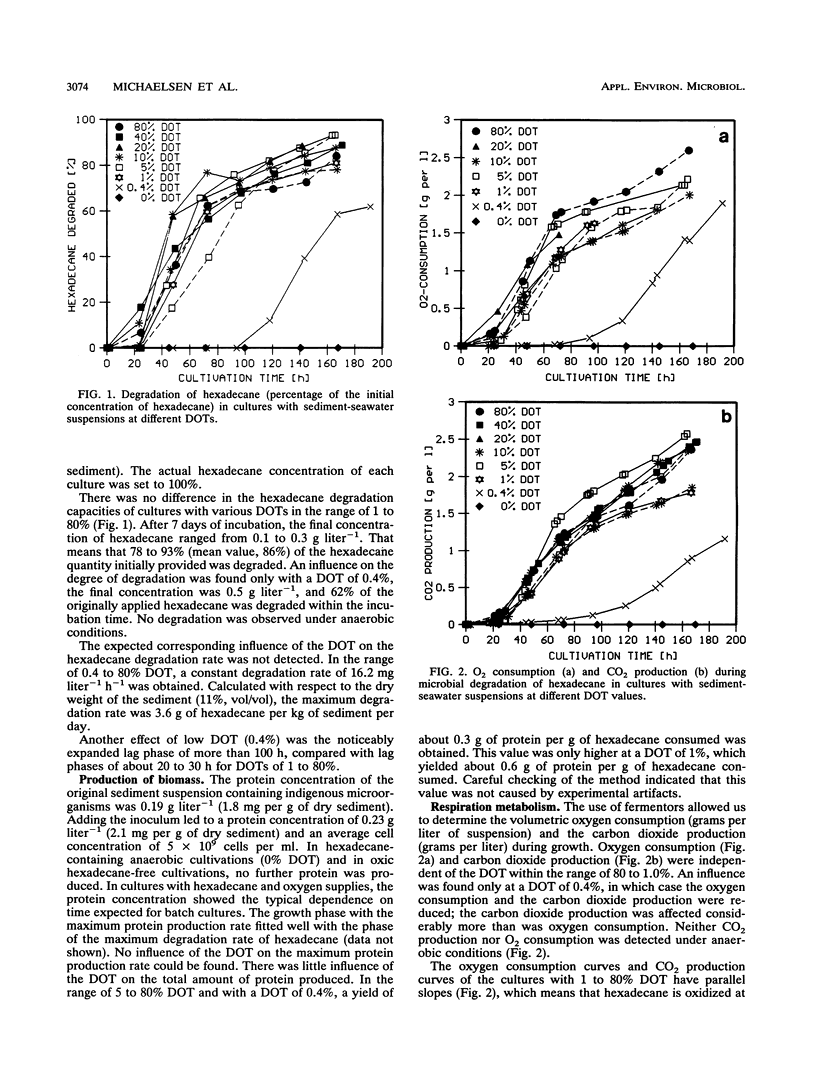
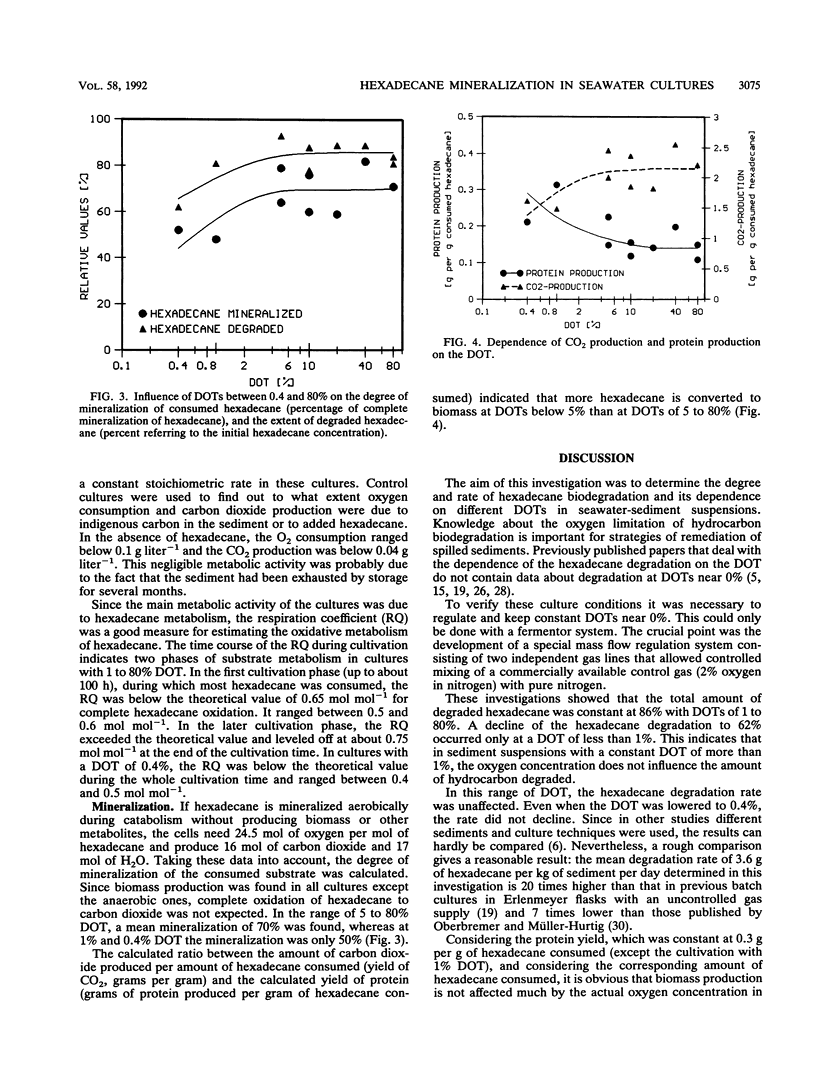
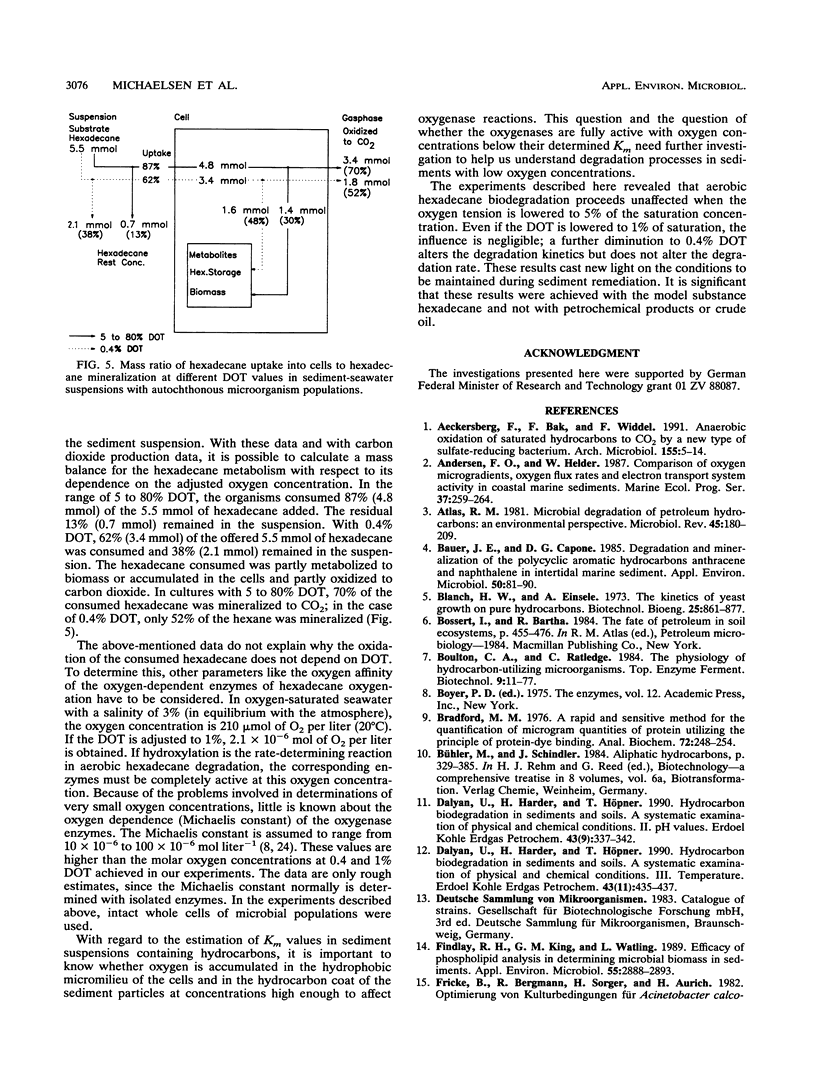
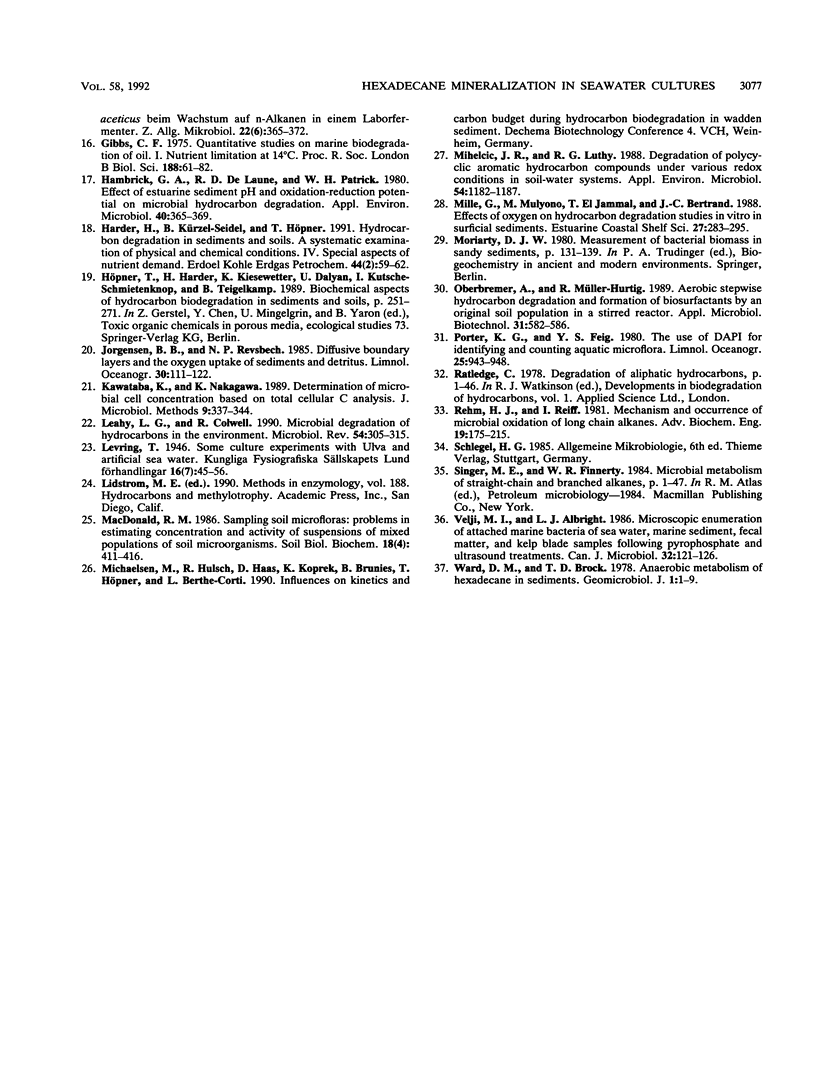
Selected References
These references are in PubMed. This may not be the complete list of references from this article.
- Atlas R. M. Microbial degradation of petroleum hydrocarbons: an environmental perspective. Microbiol Rev. 1981 Mar;45(1):180–209. doi: 10.1128/mr.45.1.180-209.1981. [DOI] [PMC free article] [PubMed] [Google Scholar]
- Bauer J. E., Capone D. G. Degradation and mineralization of the polycyclic aromatic hydrocarbons anthracene and naphthalene in intertidal marine sediments. Appl Environ Microbiol. 1985 Jul;50(1):81–90. doi: 10.1128/aem.50.1.81-90.1985. [DOI] [PMC free article] [PubMed] [Google Scholar]
- Bradford M. M. A rapid and sensitive method for the quantitation of microgram quantities of protein utilizing the principle of protein-dye binding. Anal Biochem. 1976 May 7;72:248–254. doi: 10.1016/0003-2697(76)90527-3. [DOI] [PubMed] [Google Scholar]
- Findlay R. H., King G. M., Watling L. Efficacy of phospholipid analysis in determining microbial biomass in sediments. Appl Environ Microbiol. 1989 Nov;55(11):2888–2893. doi: 10.1128/aem.55.11.2888-2893.1989. [DOI] [PMC free article] [PubMed] [Google Scholar]
- Fricke B., Bergmann R., Sorger H., Aurich H. Optimierung von Kulturbedingungen für Acinetobacter calcoaceticus beim Wachstum auf n-Alkanen in einem Laborfermentor. Z Allg Mikrobiol. 1982;22(6):365–372. [PubMed] [Google Scholar]
- Gibbs C. F. Quantitative studies on marine biodegradation of oil. I. Nutrient limitation at 14 degrees C. Proc R Soc Lond B Biol Sci. 1975 Jan 21;188(1090):61–82. doi: 10.1098/rspb.1975.0003. [DOI] [PubMed] [Google Scholar]
- Hambrick G. A., Delaune R. D., Patrick W. H. Effect of Estuarine Sediment pH and Oxidation-Reduction Potential on Microbial Hydrocarbon Degradation. Appl Environ Microbiol. 1980 Aug;40(2):365–369. doi: 10.1128/aem.40.2.365-369.1980. [DOI] [PMC free article] [PubMed] [Google Scholar]
- Leahy J. G., Colwell R. R. Microbial degradation of hydrocarbons in the environment. Microbiol Rev. 1990 Sep;54(3):305–315. doi: 10.1128/mr.54.3.305-315.1990. [DOI] [PMC free article] [PubMed] [Google Scholar]
- Mihelcic J. R., Luthy R. G. Degradation of polycyclic aromatic hydrocarbon compounds under various redox conditions in soil-water systems. Appl Environ Microbiol. 1988 May;54(5):1182–1187. doi: 10.1128/aem.54.5.1182-1187.1988. [DOI] [PMC free article] [PubMed] [Google Scholar]


